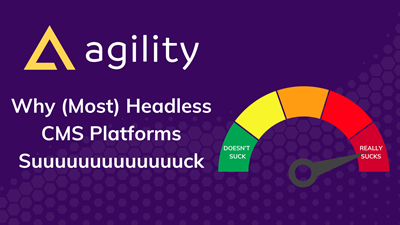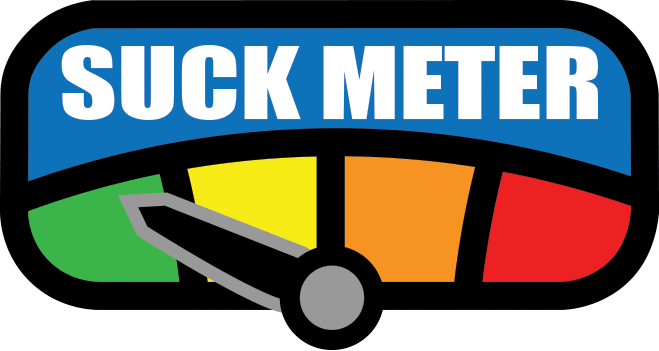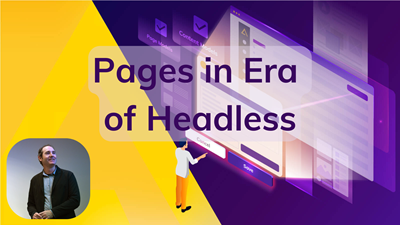Why (Most) Headless CMS Platforms Suck
It's one reason. But it's a big one.


If you're looking for a Headless CMS to solve all your problems with your current platform, I have good news! Headless CMS can get you all the things you don't have. As a result:
🔐 Your new website will be fast and secure!
💻 You can use a modern front-end framework for an amazing user experience!
🔀 Your content will be available on an API to send to multiple channels!
There's a Big Catch, Though
With almost every Headless CMS platform available, once you get past the first implementation, you are stuck.
How are you stuck, you ask? Well, you’ll be able to edit the content on each page of your new website, but you might have a hard time FINDING where to edit that content. And create a new page? That will not be an intuitive process, if you can do it at all.
And well, that sucks.

Why Is It So Hard to Do These Seemingly Basic Tasks?
This is the secret that BIG CMS has been hiding from you.
While your website is based on pages on a sitemap, your shiny new Headless CMS has absolutely no concept of what those things are. What’s more, most websites these days are based on an extensible design system of components. Guess what? There’s no concept of a component in Headless CMS.
It gets worse.
Your website has pages and components that need content. Headless CMS needs developers to implement your website. Guess who normally sets up the content structures for you? Steve Ballmer knows.
That’s right, developers!
We love developers, they do magical things with code. Do they understand how YOU want to work with your content though? Probably not. Then why would you ask a developer to design what the page structure is and how to map components from content onto a page? Even in writing that, it sounds convoluted, yet that’s what we’ve been asking developers to do with Headless CMS.
Fumbling the Football
What’s really cool is that developers have done an AMAZING JOB of building websites using Headless CMS. That’s why Headless has taken off in popularity.
The issue comes when the site gets handed off to the content team. Sometimes the content makes sense: a content item named “Homepage Top Hero” is fairly easy to identity. What about moving using that Hero component on a new page though? Or creating a new landing page that uses a contact us component, the hero component, and testimonial?
It can be super frustrating for a marketing department or content team to be handed off a site that they can only do SOME of the editing that they thought they could.
Where Agility CMS is Different From Other Headless Platforms
Agility treats Sitemaps, Pages, and Components as top-level citizens. A content architect works with developers to determine the optimal structure for content that should be reusable (read: content that’s not directly attached to just one page or component). Then, they will translate the components of the design system to structured models needed to provide the content for those components.
With Agility, developers create the code for the visual components of the website, and that’s it. The content team creates pages on a sitemap, adds components to those pages, and fills in the content. Instead of a complex set of routes residing in the file system of a web project, developers only have worry about a single “slug” route that represents every page in Agility.
Content teams are empowered to do much more in a site powered by Agility. That’s why our customers stay on the platform on average for more than ten years! Developers focus on implementing the design system, and editors focus on content, which includes components and pages.
When it comes time to move to a new design or front-end framework, all your content is still relevant! Most teams make the switch to modern stacks like Next.js or Astro without changing any content at all.
Page Management Is Where It's At
Many Headless CMS platforms suck, because they limit what your content team can actually do in the CMS itself. This is where Agility CMS shines – we call it Page Management.
What is Page Management?Page management is the smart, efficient way to organize content via a structured taxonomy. This helps boost SEO scores while streamlining your development processes. |
We built Agility this way because we used it to build customer websites for nearly 20 years. We wanted to hand off sites that we wouldn’t have to repeatedly get involved in for changes. That’s what a CMS is for, no?
With Agility, both editors and developers are empowered to get more done with less time wasted going back and forth deciding who should be doing it.

About the Author
Joel is CTO at Agility. His first job, though, is as a father to 2 amazing humans.
Joining Agility in 2005, he has over 20 years of experience in software development and product management. He embraced cloud technology as a groundbreaking concept over a decade ago, and he continues to help customers adopt new technology with hybrid frameworks and the Jamstack. He holds a degree from The University of Guelph in English and Computer Science. He's led Agility CMS to many awards and accolades during his tenure such as being named the Best Cloud CMS by CMS Critic, as a leader on G2.com for Headless CMS, and a leader in Customer Experience on Gartner Peer Insights.
As CTO, Joel oversees the Product team, as well as working closely with the Growth and Customer Success teams. When he's not kicking butt with Agility, Joel coaches high-school football and directs musical theatre. Learn more about Joel HERE.


